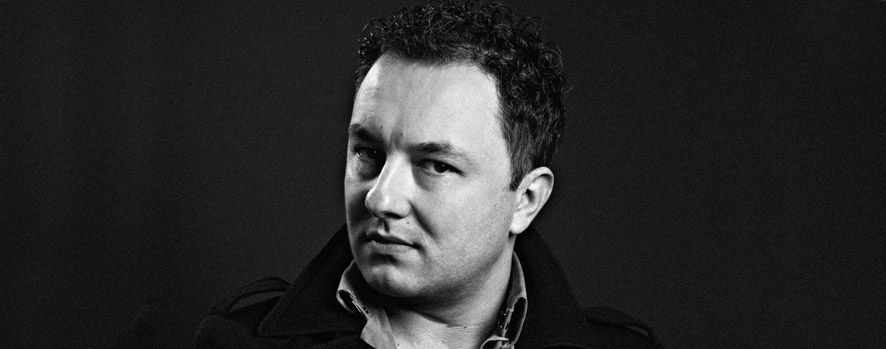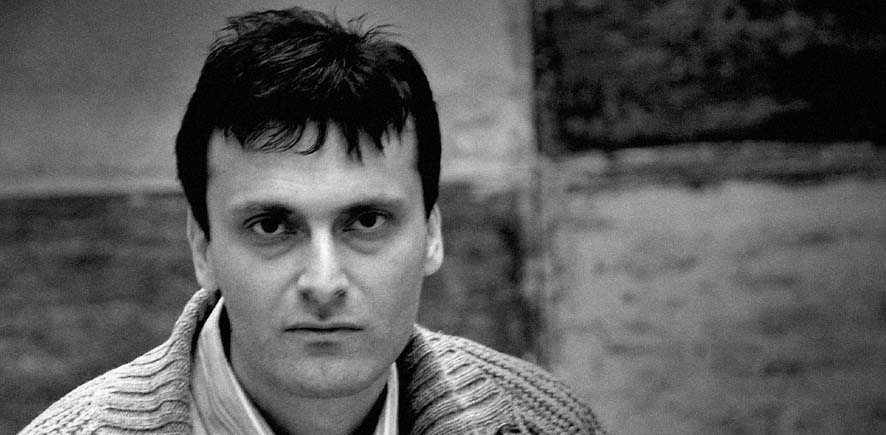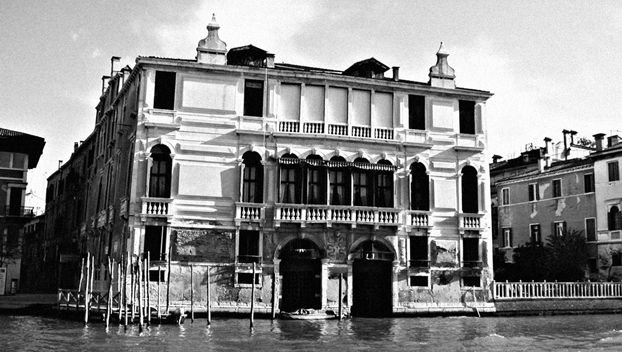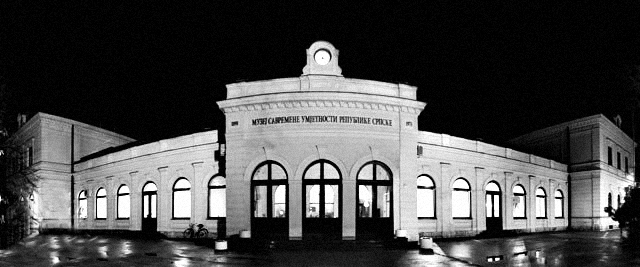Excerpt from the interview between Mladen Miljanović (Artist) and Sarita Vujković (Curator-Commisioner)
SV: To what extent is the pluralism of diversity, as a peculiar aspect of our society, a significant invariable affecting your work?
MM: As I said at the beginning of this interview, culture and the surroundings shape one according to their peculiarities, operating through various kinds of mechanisms which are often not progressive or do not contribute to progress. These mechanisms are deeply fixed in reality, imperceptible, as common as Duchamp’s Fountain. It takes the stagnation of form or shape to activate their state of uncommonness. It is form or shape, through various disciplines and types of cultural activity. All these forms exist in the public domain as freely accessible public goods; however, if form stagnates in a time of global pluralism, that does not mean it is unable to progress as an entity only; rather, it is an indication of the inabili society to effect progress.
SV: You titled one of the works shown in the MUMOK exhibition in Vienna Monumental Fragmentation. As engraving on black granite, it is technically almost identical to the works in the project The Garden of Delights. Was this work a precursor of your new orientation in terms of the use of media?
MM: That work was part of my solo show at the MUMOK in Vienna and consisted of broken pieces of marble engraved with details of the Zastava 101 automobile. It was only an investigation into and an anticipation of the project that is to be presented in the national pavilion at the Venice Biennale, only this time as a single whole. First of all, when it comes to the form and technique used, this is an autochthonous tradition typical of this region, which had its peak as used on tombstones at the end of the 1980’s and in the 1990’s. It is a peculiar ethnic turbo-folk phenomenon manifesting itself as a need to provide an idealised representation of the human body as eternal. Quite importantly, this kind of body representation on tombstones appeared late in the communist period, which is by no means incidental. This form, which is basically realistic drawings based on photographs, personalises the eternal life of the body as previously promised by communism, as opposed to religion, which promises eternal life for the soul. In this case, eternity was taken away from God and moved to social reality. In other words, this means that life created as an image prevents death. Equally so, this representation of immortality is not a paradise for the soul of man, but rather a display of living bodies. Art does not await a better society expected to arrive in the future, it immortalises here and now. Moreover, these tombstone decorations indicate the image as perception has superseded text as perception, as an important determinant of our time.
SV: How important is the domination of the ‘visual’ or ‘seen’ in this particular case?
MM: According to Walter Benjamin, vision precedes words. A child uses his eyes to make distinctions between things before he can speak. However, it is precisely vision that defines our position in the world surrounding us. We use words to understand and explain the world around us, but they do not have the power to annihilate it. The relation between what we see and what we know is never a complete or final one.

Born in Zenica in 1981, completed the secondary school in Doboj. After the secondary school he attended the Reserve Officer School where he earned the rank of sergeant. As a sergeant he trained 30 privates. After completion of the military term he enrolled at the Academy of Arts (Department of Painting, BA-MA) in Banja Luka. Lives in Banja Luka and works at Academy of Arts University of Banja Luka.
www.mladenmiljanovic.comSelected solo exhibitions:
-- „The Garden of Delights”, Venice Biennale - B&H Pavilion, Palazzo Malipiero, Venice (Italy), 2013
-- „Good Night - State of Body”, MC gallery, New York (USA), 2013
-- „Good Night - State of Body”, A+A gallery, Venice (Italy), 2012
-- „Indigo Power” Marin gallery, Umag (Croatia), 2012
-- „Good Night - State of Body”, HDLU (New media gallery), Zagreb (Croatia), 2012
-- „Taxi to Berlin”, Antje Wachs gallery, Berlin (Germany), 2011
-- „Museum Service”, MUMOK, Museum Modern Kunst Stiftung Ludwig Wien, (Austria), 2010
-- „Sarajevo Service”, National Gallery of B&H - Sarajevo, (B&H), 2010
-- „KILL” work in public space, Le mur Saint Martin, Paris (France), 2010
-- „Occupational therapy”, Center in galerija P74, Ljubljana (Slovenia), 2009
-- „Holiday of discomfort”, Antje Wachs gallery, Berlin (Germany), 2009
-- „Sit-no from I serve art”, Duplex gallery, Sarajevo (B&H), 2009
-- „Occupational therapy”, MOCA of RS, Banja Luka (B&H)
-- „I serve art” National Gallery of B&H, Sarajevo (B&H), 2008
-- „Occupo”, Neue Galerie Graz, Graz (Austria), 2007
-- „Relations”, FABRIK culture – Hegenheim (France), 2007
-- „I serve art”, ex military base Vrbas, Banja Luka (B&H), 2007
Selected group exhibitions:
2013
-- „The See is My Land”, MAXXI Museum of Contemporary Art, Rome (Italy)
-- „I Lie to Them”, National Center for Contemporary Art, Grenoble (France)
-- „I Can Be Outrageously Patient”, House of Legacy, Belgrade (Serbia)
2012
-- „Either/Or”, MS Dockville, Hamburg (Germany)
-- „14x14”, Donumenta, Kunstforum Gallery, Regensburg (Gerrmany)
-- „Not So Distant Memory”, No-Festival of Video-art and Animation in Ufa (Russia)
-- „Survey of the Danube region” ,Oberfalzer Kunstlerhaus, Schwandorf (Germany)
-- „Individual Views”, Donau Einkaufzentrum, Regensburg (Gerrmany)
-- „Subjective observations”, Kunstlerhaus, Wiena (Austria)
-- „5 Positions”, Collegium atisticum, Sarajevo (B&H)
2011
-- „Not So Distant Memory”, Dalewer Contemporary Art Center, Wilmington (USA)
-- „Beyond The Truth”, Mestna galerija Ljubljana, Ljubljana (Slovenia)
-- „It`s Time We Got to Know Each Other”, 53rd October Salone, Belgrade (Serbia)
-- „Iron Applause”, Slovak National Gallery, Bratislava (Slovakia)
-- „Not So Distant Memory”, National Center for Contemporary Art, St. Petersburg (Russia)
-- „Continuity”, Center for Contemporary art Celje, Celje (Slovenia)
-- „Stay Hungry”, Schrebergärten am Gleisdreieck, Berlin (Germany)
-- „No Network”, International Biennale of Contemporary Art, Konjic (B&H)
-- „255.804 km2”, Brot Kunsthalle, Vienna (Austria)
-- „Krieg.Kunst.Krise”, Artpoint gallery – KulturKontakt Austria, Vienna (Austria)
-- „Band of Outsiders”, Big screen project, New York (USA)
-- „A correspondence, Mladen Miljanovic – Nina Glockner”, De Balie - Amsterdam (Nederland)
2010
-- „Bosnia and Herzegovina Searching for Lost Identity”, P74 Gallery - Ljubljana (Slovenia)
-- „The End of the World as We Know It”, Kunsthalle - Mullhouse (France)
-- „I am what I am”, 25th Memorial Nadežda Petrović, Gallery Nadežda Petrović - Čačak (Serbia)
-- „255.804 km2”, Mestna galerija, Ljubljana (Slovenia)
-- „Condensations of the Social”, Smack Mellon, New York (USA)
-- „Krieg.Kunst.Krise”, Hofburg Museum, Innsbruck (Austria)
-- „VIII Performance & Intermedia Festival”, National Museum Szczecin, (PL)
-- „Art and global crisis”, York, England (UK)
-- „Interspace”, National Gallery of B&H, Sarajevo (B&H)
2009
-- „Henkel Art.Award”, MUMOK, Museum Modern Kunst Stiftung Ludwig Wien, (Austria)
-- „Heiß oder Kalt”, Haus der Kulturen der Welt, Berlin (Germany)
-- „Imaginary pavilion of B&H”, Palazzo Forti, Verona (Italy)
-- „Interspace”, Museum of city Skoplje, Skopje, (Macedonia)
-- „Lille 3000. Europe XXL.”, Lille, (France)
-- „Art and Terrorism”, City gallery Bihać, Bihać (B&H)
-- „Video channel 09”, Cologne, (Germany)
2008
-- „Artist-Citizen”, 49th October Salon, Belgrade (Serbia)
-- „Busan biennial”, International exhibition of video art - Busan (South Korea)
-- „Hotel MariaKapel”, a portrait by Katie Jane, Horn (Nederland)
-- Örebro International Video Art Festival (Sweden)
-- „Boys and their toys”, SC gallery, Zagreb (Croatia)
-- „Spa Port”, International exhibition of contemporary art - Banja Luka (B&H)
-- „My land Staglinc”, on property of Vlasta Delimar, Koprivnica (Croatia)
-- „Joint exhibition of young visual artist awards winners’’, gallery Magacin – Belgrade (Serbia)
-- „Interspace”, Cultural Center of Belgrade, Belgrade (Serbia)
-- „Vojna in Mir-Spomini in spomeniki”, gallery Rika Debenjak-Kanal (Slovenia)
2007
-- „Strategies of conforment in the age of biopolitics”, Brakeground Gallery, Amsterdam (Nederland)
-- „Retrospektrum”, National Gallery of B&H, Sarajevo (B&H)
-- „Corcoran”, salon - Museum of Contemporary arts Belgrade (Serbia)
-- „Interspace”, Museum of Contemporary arts Vojvodina, Novi Sad (Serbia)
-- „Dialogue”, exhibition, Hegenhaim-Basel (France)
2006
-- „Eastern neighbors”, Cultural Center Babel, Utrecht (Nederland)
-- „Continental Breakfast”, Museum of Contemporary Art of RS, Banja Luka (B&H)
-- Finalists of „ZVONO” annual Award, KC Banski dvor, Banja Luka (B&H)
-- „(l)imitations”, young artists from B&H, Student Center Gallery, Zagreb (Croatia)
-- „Real Presence”, International exhibition of students, Beograd (Serbia)
2005
-- „Hello Bing, how’s the brother”, National Gallery of B&H, Sarajevo (B&H)
Awards
-- 2009 „Henkel Art.Award” 09
-- 2007 „Zvono”, award for best young artist in B&H
-- 2006 Award of the Museum of Contemporary Art RS in Banja Luka for the best works at the annual final exhibition of the Academy of Arts in Banja Luka
Residencies:
-- 2012 Donumenta - Oberfalzer Kunstlerhaus, Schwandorf (Germany)
-- 2008 ISCP centar - New York (USA)
-- 2007 Neue Galerie Graz, Graz (Austria)
-- 2007 Kultur Fabrik, Hegenheim (France)
Selected presentations and artist talks:
-- 2012 Academy of Arts Munchen, Munchen - (Germany)
-- 2012 HDLU (Mestrovic pavilion) in BLOK organisation, Zagreb (Croatia)
-- 2012 „Perfect Strangers” Triple Cannopy (NY), Collegium Artisticum, SA (B&H)
-- 2012 Donumenta, Regensburg - (Germany)
-- 2011 City Museum Ljubljana, Ljubljana - (Slovenia)
-- 2011 53rd October Salon, Belgrade - (Serbia)
-- 2011 Nador Gallery, Pech - (Hungary)
-- 2008 ISCP, New York - (USA)
-- 2008 LMCC, New York - (USA)
-- 2008 „Fnac” Stasbourg - (France)
-- 2006 „Real presence” - Belgrade - (Serbia)


Born in Banja Luka in 1972. Holds a degree in the history of art from The Faculty of Philosophy, University of Belgrade. In 2008, she completed an interdisciplinary postgraduate course in the theory of art and media at The University of Arts in Belgrade, winning a master’s degree. In 2011, she defended a doctoral dissertation entitled „Ideological, Aesthetic and Art Models in the Artworks of Bosnian and Herzegovinian Female Artists from 1945 until 2005” at The Faculty of Philosophy, University of Belgrade. Works at The Museum of Contemporary Art Republic of Srpska as a Museum Consultant in the Records and Exhibition Department. Author, curator and selector in a number of projects on contemporary art, media and gender. Author of professional and academic papers in the fields of museology, gender theory and contemporary art. Author of the books In the Civic Mirror: Female Identities in Bosnia and Herzegovina’s Civic Culture 1878–1941, MSURS, Banja Luka, 2009; and together with Bojana Pejić „Mirostories: Contemporary female art and its post-2000 contexts, MSURS, Banjaluka, 2012. Professor at The Faculty of Information Technology and Design Banja Luka. President of the ICOM National Committee Bosnia and Herzegovina.
Selected curatorial projects:
Five Decades of The Autumn Salon in Banja Luka, 2013; Microstories: Contemporary Female Art and Its Post-2000 Contexts, 2012; Borjana Mrđa, A Shifting Body, 2012; Art and its Context(s), 2010; Enver Štaljo (1931–1991), A Retrospective, 2010; Adela Ber (1888 – 1966), the first formally trained female artist of Bosnia and Herzegovina, 2010; Mladen Miljanović, Occupo, 2009; Mileta Prodanović, 29 Works, (2009); Irena Lagator, Is It Still Winter Outside, 2007; Lala Raščić, All is Connected, 2007; Nenad Malešević, Age of Renewal, 2007; Interspace, 2007; Antea Arizanović, Transformations, 2006; Velizar Krstić, Paintings, Prints, Sketches, 2005; Aleksandar Rafajlović, I painted Ayrton Senna, 2005; Art Association Protok, a photo-installation by Radenko Milak and Bojan Stevanić, 2004
International curatorial projects:
-- Dialogue in Bosnia and Herzegovina, FABRIKculture, Hegenheim, for the international project Dialogue and upon invitation of the organising institution Apollonia European Art Exchange, Strasbourg, 2007
-- Interspace, 2007, Museum of Contemporary Art of Vojvodina, Novi Sad, November-December 2008, Museum of Skopje, Skopje, September 2009, Art Gallery, Sarajevo, January 2010
-- National Pavilion at Eastern Neighbours, organised by Stichting Cultural Aid, Utrecht, Holland; assistant curator, 2006
-- Continental Breakfast: Memory (w)Hole; assistant curator, authorship of texts on local artists, 2006
Born in Bihać in 1977. Holds a bachelor’s degree from The Academy of Arts in Sarajevo and a master’s and doctoral degrees from The Faculty of Philosophy, University of Zagreb, Department of History of Art. Currently teaches a group of subjects in the field of humanities at the Department of Textile Design of The Technical Faculty of Bihać University (Art History; History of Textile and Clothing; Sociology of Culture and Fashion). His research interests include contemporary art, architecture and clothing in conflict contexts, with a special focus on Bosnia and Herzegovina. Apart from academic work and research, author of a number of art reviews and texts published in magazines in Bosnia and Herzegovina and Croatia. From 2010 to 2012, Irfan Hošić wrote art reviews and texts for the Sarajevo weekly DANI, one of which won him the BIRN Award (Belgrade, Serbia). Curator and author of several curatorial projects. As an assistent curator he was part of the second cycle of Biennale of contemporary art D-0 ARK Underground in Konjic.
Curatorial projects:
-- Spomenko Škrbić, Things, 2013
-- Clothing as a Symbol of Identity, 2012
-- Alem Korkut, Sculptures, 2012
-- Art and Terrorism. Art in Bosnia and Herzegovina in the Aftermath of 11/9, 2009
-- What is Abstraction? Art in Bosnia and Herzegovina in the 1950’s and 1960’s, 2007
Other work
-- Academic conference chair, „Clothing as a Symbol of Identity”, 2011, and „Attention! Clothing, Art, Identity”, 2013, held by Bihać University and The City Gallery Bihać.
June 1 - November 24, 2013
at Palazzo Malipiero
3198 San Marco, Venice
The idea behind the complete project of the artist Mladen Miljanović, representing Bosnia and Herzegovina in the 55th International Art Exhibition of the Venice Biennale, is that of unbridled people’s desires, of personal truths of the collective absurdity of the contemporaneity, as perceivable across Bosnia. The conceptual framework of the project is realised as an evocation of Hieronymus Bosch’s famous Renaissance triptych „The Garden of Earthly Delights”, and is firmly rooted in today’s material world of a range of common people’s experiences, as the most authentic and the most banal realities of post-transition society. The selected project is an engaged work of art penetrating deep into the socio-political, ethical, economic and cultural tissue of the Eastern European society the artist comes from. His up-to-date, relevant, global insight, „filtered” through the local context, transforms into a new, clear artistic vision, which is a significant determinant of the entire work. A long exploration preceded the exhibition, which involved collecting and archiving decorations engraved on tombstones, a regional peculiarity the artist used to shape the major artefacts that constitute the work. The inherent idea of afterlife representation is conveyed through the ready-made aesthetics, borrowed from the mass media, everyday and some popular circumstances of life of Bosnian people. The subversive sociological, ethnological and ritual features of the pictures read as the existent representations of a mass culture that has taken over post-transition society, reflecting the failure of its economy and privatisation, political paradoxes and intolerance, and the nontransparent reality of the new models of private ownership. What we are to encounter in the days to come, what kind of reality we are living today and how it is represented are the major issues found in this artificial post-communist paradise, in which art, according to Boris Groys, often appears innocent, inadequately critical or radical, following the utopian logic of inclusion, instead of the realist logic of exclusion, struggle and criticism. Spatial and temporal relations, their homogeneity and heterogeneity, are merely formal aspects constituting the social particularities against which real life happens. In his work Mladen Miljanović „vivisects” human life in the manner of an anthropologist; he is engrossed in what people have in common and what sets them apart, how they live, what they think, and how they relate to the things they indulge in as individuals. Culture is the key term of his anthropological attitude discerning similarities and differences within a specific community, in which he also lives and operates. His allegorical substitution, within which he finds and singles out tools of people’s personal pleasures, is a premeditated effort to create an encyclopaedia that would contain the total sum of human knowledge, and in this particular case also personal desires and unfulfilled potential. The personal truths the artist identifies and singles out are collective absurdities, perceived as instruments of a collective paradox, the current peculiarity of all of Bosnia and Herzegovina and its adjacent region.
Sarita Vujković
Commissioner

Contact:
Museum of Contemporary Art Republic of Srpska
Trg srpskih junaka 2, 78000 Banja Luka
Republic of Srpska, Bosnia and Herzegovina
Phone: +387 (0) 51 215 364
Fax: +387 (0) 51 215 366
e-mail: galrs@inecco.net
e-mail: branka-msurs@teol.net
Web: www.msurs.org
The artist Mladen Miljanovic, representing Bosnia and Herzegovina at the 55th International Art Exhibition of la Biennale di Venezia, will present a solo exhibition of new works titled “The Garden of Delights” at Palazzo Malipiero in Venice from June 1 to November 24, 2013. It is after a ten-year intermission that Bosnia-Herzegovina will participate again in the International Art Exhibition of the Venice Biennale. Its attendance in the 55th biennial event in Venice this year bears the heavy load of a new beginning, one that is expected to serve as a precedent for its national participation in the future. The initial impetus came from the Museum of Contemporary Art of the Republic of Srpska, which proposed a model intended to overcome the long-standing impasse at the state level. The participation model proposed by the initiating institution has been approved by the Ministry of Civil Affairs of Bosnia and Herzegovina, in agreement with the relevant ministries of the Republic of Srpska and the Federation of Bosnia and Herzegovina. Political disagreements continually made it impossible for local artists and projects to exhibit in this prestigious internal political and economic impediments it has to encounter. And its art, although practically imperceptible from outside the country, abounds in both people and events.
In that sense, the selected project, The Garden of Delights, is a highly socially engaged work of art, which seeks to create effects from multiple historical perspectives, and with strong connotations drawing on the socio-political, ethical, economic and cultural context of the Eastern European society, which the artists come from. The project ensemble consists of three interconnected smaller ensembles, a marble triptych, a video clip and an installation, and the artist, as its creator, posits himself as an activist whose practice and production impose themeselves as a model in a highly specific way, making possible engagement originating in the local community, i.e. environment. His knowledge of the global world, up-to-the-minute and relevant, filtered through the local context, creates a new, clear artistic insight, which is a significant determinant of the entire ensemble. The idea behind the complete project of The Garden of Delights is that of people’s unbridled desires, of personal truths underneath the collective absurdity of the contemporaneity, as perceived across Bosnia. The conceptual framework of the project is reminiscent of Hieronymus Bosch’s famous Renaissance triptych The Garden of Earthly Delights (c. 1500), and it is firmly rooted in today’s physical world of common people’s various experiences, as the most authentic and the most banal realities of post-transition society. Mystical and provocative even for today’s interpreters, the triptych by Hieronymus Bosch was the initial inspiration for the work of Mladen Miljanović; rather complex and materialised in a way which is, by comparison with contemporary art techniques, quite non-standard and atypical, his ensemble consists of drawings engraved on marble slabs, a stonework tradition commonly used in tombstone decoration in the Balkans.
For this work he said:
-- The work emulates manual tombstone engraving, which I did before enrolling in the Academy of Arts.
- The installation contains more than 100 tombstone motifs found and collected in the Central Balkans.
-- People mainly choose these motifs as illustrations of their indulgences and because they wish to see them immortalised by means of the real.
-- The emergence of this manner of representation coincided with the rise of the kitsch and turbo-folk culture in the 1980’s and 1990’s.
-- The scenery as shown in the painting The Garden of Earthly Delights by the Renaissance painter Hieronymus Bosch provided the foundation for this work.
-- The work is the outcome of a five-hundred-year-long debate and revises the notion of pleasure and its different contemporary representations as a stereotypical and pessimist vision of society.
-- The form of the image of a personal indulgence becomes an expression of the collective absurd and disharmony.
-- In this case, the graveyard is an area storing an encyclopaedia of images of individual lives joined into a garden of a collective eternity.
What awaits us in the future, what our reality is and how it is represented are the major issues found in this artificial post-communist paradise, in which art, according to Boris Groys, often appears innocent, insufficiently critical or radical, following the utopian logic of inclusion rather than the realist logic of exclusion, struggle and criticism. Spatial and temporal relations, their homogeneity and heterogeneity, are but formal aspects constituting the social particularities against which real life happens.
The inherent idea of afterlife representation as Miljanović sees it is conveyed using the ready-made aesthetics, borrowed from the mass media, the everyday and some popular aspects of life of Bosnian people. Their subversive sociological, ethnological and ritual characteristics are an image of the existent representations of a mass culture that has taken over post-transition society, reflecting the failure of its economy and privatisation, political paradoxes and intolerance, and the nontransparent nature of the new models of private ownership.
While realising his concept, Miljanović made a video to be used as an accompaniment to the exhibit, which he called Sweet Harmony of the Absurd and in which members of the Banja Luka Philharmonic simultaneously play their favourite pieces. The multiplicity of this melodious plurality, tinted with personal wishes, interests and lifestyles as found in society, reflects the heterogeneity of Bosnia and Herzegovina and its cultural dynamics, at times synchronous and stimulating, at others crippling and disasterous to utter ruin. Sweet Harmony of the Absurd is an authentic representation of the ambivalent makeup of Bosnian and Herzegovinian society, marked by conflicting sentiments and attitudes. Integrated with The Garden of Delights, it rounds off Mladena Miljanović’s peculiar artistic discourse, strongly marked by an awareness of constant affirmation, according to which human creativity is best stimulated by desire.
An extensive exhibition catalog will present reproductions of many earlier works of Mladen Miljanovic and provide artist’s biography and professional texts.
Download Press Images
Organisation
Museum of Contemporary Art Republic of Srpska
Manager Organisation / Production
Lijljana Labović Marinković
T/F: +387 51 215 366
E: galrs@inecco.net
Museum of Contemporary Art Republic of Srpska
Trg srpskih junaka 2, 78000 Banja Luka,
Bosnia and Herzegovina
T/F: +387 51 215 366
E: galrs@inecco.net
www.msurs.org
Press
Branka Šestić - BIH press
M: +387 65 640 098
E: pressbih@labiennalebih.org
Claudia Zini - International press
M: +39 349 7248 831
E: press@labiennalebih.org

